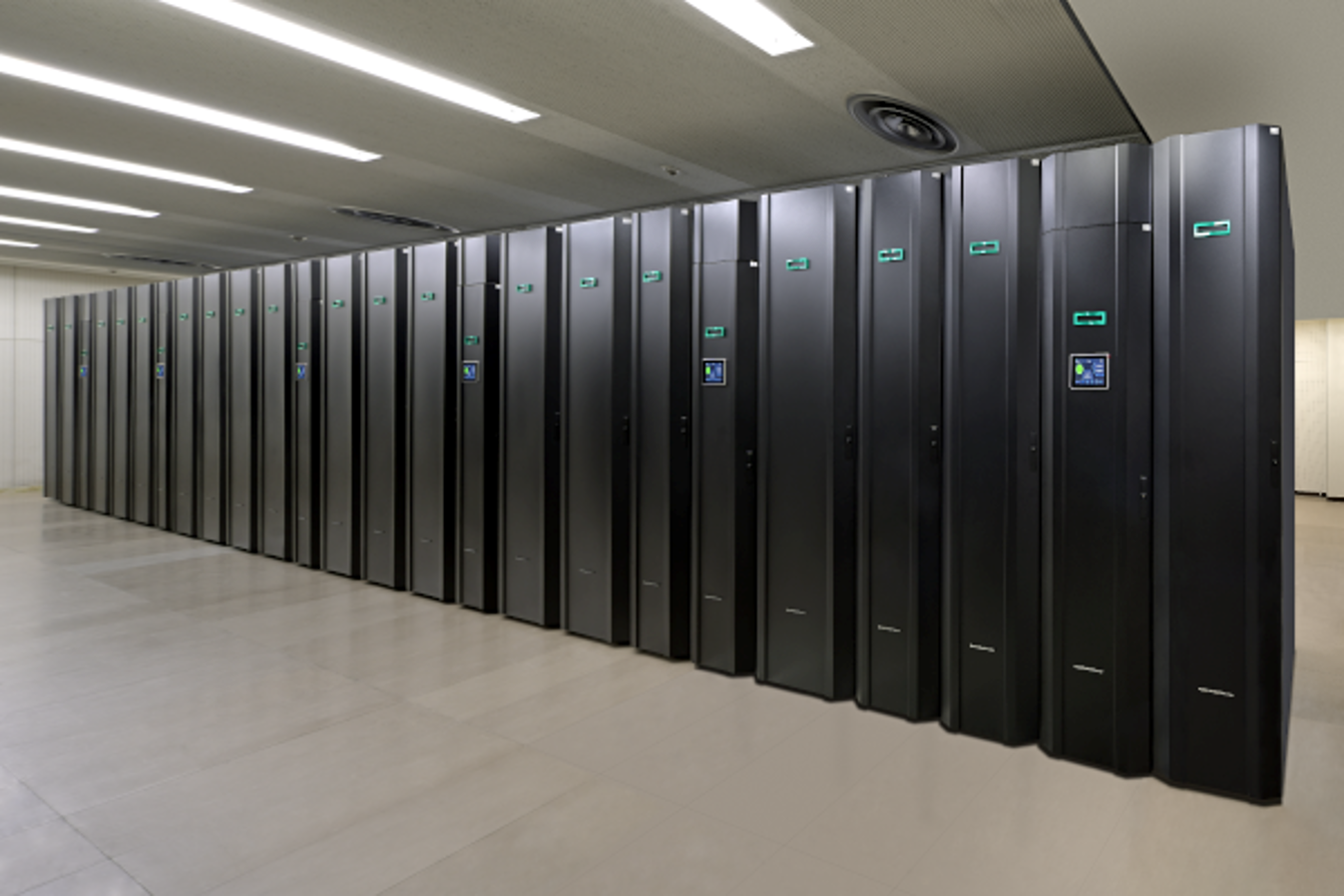Resources

Compute server
| Node type | CPU | GPU | Memory [GiB] |
Number of nodes |
Local scratch on NVMe SSD [GB] |
Peak performance [TFLOPS] |
|---|---|---|---|---|---|---|
| Type C |
AMD EPYC 7763 (64 cores 2.45 GHz) [2 CPUs/node] |
- | 256 | 804 | 1536 | 4,034 |
| Type F | 1,024 | 14 | 70.2 | |||
| Type G |
NVIDIA A100 80 GB (NVLink) [8 GPUs/node] |
256 | 16 |
80.3 (CPU)
2,496 (GPU)
|
Each compute server is equipped with two AMD EPYC 7763 processors (128 cores/node in total). The Type F servers are equipped with 1,024 GiB of memory and are intended for computation requiring large amounts of memory. The Type G servers are equipped with eight NVIDIA A100 80 GB GPUs per node. The GPUs are connected to each other via NVLink. Each server also has a local work area (/lwork) on NVMe SSDs that can be used as a temporary file storage area for jobs.
Storage
The storage consists of Lustre, a high-performance distributed file system, and can be accessed from compute servers and login servers. The effective capacity is 14.8 PB. Each user's home directory is placed on this storage. It can be used as a global temporary file storage (/gwork), allowing the placement of large temporary files that cannot be placed on the compute server's local NVMe SSD.
Interconnect
The compute server, login server, and storage are connected via InfiniBand for high-bandwidth, low-latency communication.
Login server (ccfep)
| CPU | Memory[GiB] | Number of nodes |
|---|---|---|
|
AMD EPYC 7763 (64 cores 2.45 GHz) [2 CPUs/node] |
256 | 4 |
The login server (ccfep) has the same hardware configuration as compute servers. On login servers, you can not only submit jobs, but also build and test programs and even perform simple analysis.